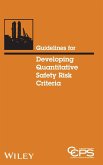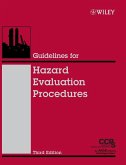One of the key issues in the development of nanotechnology is how to control, reduce, and eliminate the environmental and related problems associated with this technology; the success or failure of this new use may well depend on the ability to effectively and efficiently address these environmental issues. Nanotechnology presents an investigation of the environmental ramifications of nanotechnology.
An authoritative, in-depth exploration of the environmental consequences of nanotechnology
Nanotechnology is revolutionizing the chemical, telecom, biotech, pharmaceutical, health care, aerospace, and computer industries, among others, and many exciting new nanotech applications are envisioned for the near future. While the rapid pace of innovation has been truly inspiring, much remains to be learned about the potential environmental and health risks posed by this nascent technology and its byproducts. So important is this issue that the ultimate success or failure of nanotechnology may well depend on how effectively science and industry address these concerns in the years ahead.
Written by two highly accomplished environmental professionals, Nanotechnology: Environmental Implications and Solutions brings scientists, engineers, and policymakers up to speed on the current state of knowledge in this vitally important area. Professor Theodore and Dr. Kunz provide a concise review of nano-fundamentals and explore background issues surrounding nanotechnology and its environmental impact. They then follow up with in-depth discussions of:
_ The control, monitoring, and reduction of nanotech byproducts and their impact on the air, water, and land
_ Health risks associated with nanotechnology, and methods to assess and control them
_ Nanotech hazard risk assessment-including emergency response planning and personnel training
_ Multimedia approaches that are available for the analysis of the impact of nanotechnology in the chemical, manufacturing, and waste disposal industries
_ The future of nanotechnology and the "Industrial Revolution II"
_ The legal implications of nanotechnology
_ Societal and ethical implications of nanotechnology-based materials and processing method
Assuming only a basic knowledge of physics, chemistry, and mathematics on behalf of its readers, Nanotechnology: Environmental Implications and Solutions makes fascinating and useful reading for engineers, scientists, administrators, environmental regulatory officials, and public policy makers, as well as students in a range of science and engineering disciplines.
Hinweis: Dieser Artikel kann nur an eine deutsche Lieferadresse ausgeliefert werden.
An authoritative, in-depth exploration of the environmental consequences of nanotechnology
Nanotechnology is revolutionizing the chemical, telecom, biotech, pharmaceutical, health care, aerospace, and computer industries, among others, and many exciting new nanotech applications are envisioned for the near future. While the rapid pace of innovation has been truly inspiring, much remains to be learned about the potential environmental and health risks posed by this nascent technology and its byproducts. So important is this issue that the ultimate success or failure of nanotechnology may well depend on how effectively science and industry address these concerns in the years ahead.
Written by two highly accomplished environmental professionals, Nanotechnology: Environmental Implications and Solutions brings scientists, engineers, and policymakers up to speed on the current state of knowledge in this vitally important area. Professor Theodore and Dr. Kunz provide a concise review of nano-fundamentals and explore background issues surrounding nanotechnology and its environmental impact. They then follow up with in-depth discussions of:
_ The control, monitoring, and reduction of nanotech byproducts and their impact on the air, water, and land
_ Health risks associated with nanotechnology, and methods to assess and control them
_ Nanotech hazard risk assessment-including emergency response planning and personnel training
_ Multimedia approaches that are available for the analysis of the impact of nanotechnology in the chemical, manufacturing, and waste disposal industries
_ The future of nanotechnology and the "Industrial Revolution II"
_ The legal implications of nanotechnology
_ Societal and ethical implications of nanotechnology-based materials and processing method
Assuming only a basic knowledge of physics, chemistry, and mathematics on behalf of its readers, Nanotechnology: Environmental Implications and Solutions makes fascinating and useful reading for engineers, scientists, administrators, environmental regulatory officials, and public policy makers, as well as students in a range of science and engineering disciplines.
Hinweis: Dieser Artikel kann nur an eine deutsche Lieferadresse ausgeliefert werden.
"...explores whether current environmental and safety-related technologies are sufficient to handle the known and as-yet-unforeseen hazards and risks associated with the use of nanoscaled materials..." (Chemical Engineering, May 2005)
"...people who work in the realm of nanotechnology may welcome this book's consolidated presentation of today's environmental policies and procedures." (Small Times, May/June 2005)
"...people who work in the realm of nanotechnology may welcome this book's consolidated presentation of today's environmental policies and procedures." (Small Times, May/June 2005)
"The reference section is extensive, spanning a wide range of subjects." (Journal of Industrial Ecology, 2008)
"...will help the determined reader grasp many of the implications, challenges, and opportunities presented by the management of nanotechnology materials." (Facilities Manager, March/April 2006)
"...the book covers a wide range of topics regarding past and current management of environmental pollutants..." (Materials and Manufacturing Processes, February 2006)
"Readers...will have a much better idea of the basic principles of how pollutants are managed in current US regulatory framework." (CHOICE, October 2005)
"...a thorough over view of existing environmental regulations." (Chemical Health & Safety, July/August 2005)
"...a well written and a valuable text for those becoming involved in the new science of nanotechnology." (Energy Sources, August 2005)
"...well-written and containing useful environmental information." (Journal of Hazardous Materials, September 2005)
"...an excellent summary of traditional environmental pollution issues." (Environmental Health Perspectives, July 2005)
"...people who work in the realm of nanotechnology may welcome this book's consolidated presentation of today's environmental policies and procedures." (Small Times, May/June 2005)
"...explores whether current environmental and safety-related technologies are sufficient to handle the known and as-yet-unforeseen hazards and risks associated with the use of nanoscaled materials..." (Chemical Engineering, May 2005)
"...will help the determined reader grasp many of the implications, challenges, and opportunities presented by the management of nanotechnology materials." (Facilities Manager, March/April 2006)
"...the book covers a wide range of topics regarding past and current management of environmental pollutants..." (Materials and Manufacturing Processes, February 2006)
"Readers...will have a much better idea of the basic principles of how pollutants are managed in current US regulatory framework." (CHOICE, October 2005)
"...a thorough over view of existing environmental regulations." (Chemical Health & Safety, July/August 2005)
"...a well written and a valuable text for those becoming involved in the new science of nanotechnology." (Energy Sources, August 2005)
"...well-written and containing useful environmental information." (Journal of Hazardous Materials, September 2005)
"...an excellent summary of traditional environmental pollution issues." (Environmental Health Perspectives, July 2005)
"...people who work in the realm of nanotechnology may welcome this book's consolidated presentation of today's environmental policies and procedures." (Small Times, May/June 2005)
"...explores whether current environmental and safety-related technologies are sufficient to handle the known and as-yet-unforeseen hazards and risks associated with the use of nanoscaled materials..." (Chemical Engineering, May 2005)









